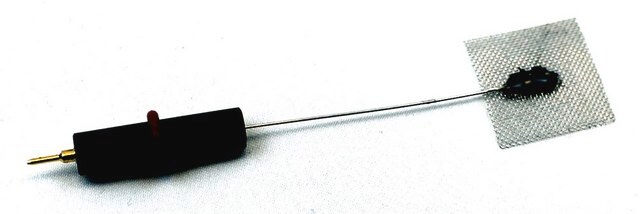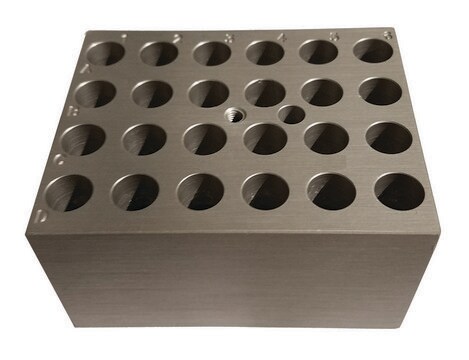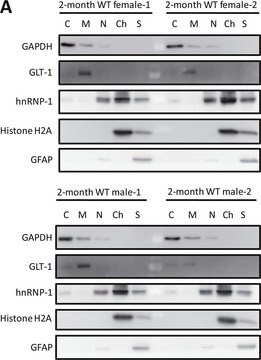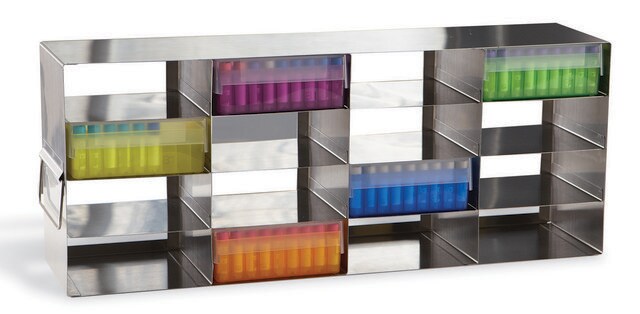HTS021RTA
Ready-to-Assay MC2 Melanocortin Receptor Frozen Cells
Human
Autenticatiper visualizzare i prezzi riservati alla tua organizzazione & contrattuali
About This Item
Codice UNSPSC:
41106514
eCl@ss:
32011203
NACRES:
NA.81
Prodotti consigliati
product name
Ready-to-Assay MC2 Melanocortin Receptor Frozen Cells, Human MC2 GPCR frozen cells for Calcium Flux FLIPR Assays.
Origine biologica
human
Livello qualitativo
Produttore/marchio commerciale
Ready-to-Assay
tecniche
calcium flux assay: suitable
N° accesso NCBI
Metodo di rivelazione
fluorometric
Condizioni di spedizione
dry ice
Descrizione generale
Millipore’s Ready-to-Assay GPCR frozen cells are designed for simple, rapid calcium assays with no requirement for intensive cell culturing. Millipore has optimized the freezing conditions to provide cells with high viability and functionality post-thaw. The user simply thaws the cells and resuspends them in media, dispenses cell suspension into assay plates and, following over night recovery, assays for calcium response.
The melanocortins, α-, β- and γ-melanocyte-stimulating hormones (MSHs) and adrenocorticotropin (ACTH), are peptides derived from a precursor protein POMC. The MSH peptides and ACTH bind to a family of five Class 1 Gs-coupled seven transmembrane receptors (MC1-5) and play important roles in energy balance, reproductive function, pigmentation and inflammation (Gantz and Fong, 2003). MC2, the ACTH receptor, is a member of this family but is the only one that does not bind the MSHs, it instead binds ACTH exclusively. MC2 is expressed mainly in cells of the adrenal cortex, where it signals cells in the adrenal cortex to synthesize and secrete glucocorticoids (Clark A. et al., 2006). Mutations in MC2 lead to familial glucocorticoid deficiency, or ACTH insensitivity. Familial glucocorticoid deficiency can lead to increased pigmentation and increased longitudinal bone growth (Clark A, et al. 1993, Imamine H, et al. 2005). In addition to mutations in MC2 leading to Familial glucocorticod deficiency, it has also been shown that mutations in a protein called MC2-R accessory protein (MRAP) also lead to this disorder (Clark A, 2005). Expression of MC2 on the cell surface has been found to be dependent on the interaction of MC2 with MRAP. This interaction helps to move MC2 from the endoplasmic reticulum to the cell surface. Millipore’s cloned human MC2-expressing cell line is made in the Chem-1 host, which supports high levels of recombinant MC2 expression on the cell surface and contains high levels of the promiscuous G protein Gα15 to couple the receptor to the calcium signaling pathway. Thus, the cell line is an ideal tool for screening for agonists, antagonists, and modulators at MC2.
The melanocortins, α-, β- and γ-melanocyte-stimulating hormones (MSHs) and adrenocorticotropin (ACTH), are peptides derived from a precursor protein POMC. The MSH peptides and ACTH bind to a family of five Class 1 Gs-coupled seven transmembrane receptors (MC1-5) and play important roles in energy balance, reproductive function, pigmentation and inflammation (Gantz and Fong, 2003). MC2, the ACTH receptor, is a member of this family but is the only one that does not bind the MSHs, it instead binds ACTH exclusively. MC2 is expressed mainly in cells of the adrenal cortex, where it signals cells in the adrenal cortex to synthesize and secrete glucocorticoids (Clark A. et al., 2006). Mutations in MC2 lead to familial glucocorticoid deficiency, or ACTH insensitivity. Familial glucocorticoid deficiency can lead to increased pigmentation and increased longitudinal bone growth (Clark A, et al. 1993, Imamine H, et al. 2005). In addition to mutations in MC2 leading to Familial glucocorticod deficiency, it has also been shown that mutations in a protein called MC2-R accessory protein (MRAP) also lead to this disorder (Clark A, 2005). Expression of MC2 on the cell surface has been found to be dependent on the interaction of MC2 with MRAP. This interaction helps to move MC2 from the endoplasmic reticulum to the cell surface. Millipore’s cloned human MC2-expressing cell line is made in the Chem-1 host, which supports high levels of recombinant MC2 expression on the cell surface and contains high levels of the promiscuous G protein Gα15 to couple the receptor to the calcium signaling pathway. Thus, the cell line is an ideal tool for screening for agonists, antagonists, and modulators at MC2.
Descrizione della linea cellulare
GPCR Cell Lines
Host cells: Chem-1
Azioni biochim/fisiol
GPCR Class: A
Protein Target: MC2
Target Sub-Family: Melanocortin
Componenti
Pack contains 2 vials of mycoplasma-free cells, 1 ml per vial.
Fifty (50) mL of Media Component.
Fifty (50) mL of Media Component.
Codice della classe di stoccaggio
10 - Combustible liquids
Classe di pericolosità dell'acqua (WGK)
WGK 1
Punto d’infiammabilità (°F)
Not applicable
Punto d’infiammabilità (°C)
Not applicable
Certificati d'analisi (COA)
Cerca il Certificati d'analisi (COA) digitando il numero di lotto/batch corrispondente. I numeri di lotto o di batch sono stampati sull'etichetta dei prodotti dopo la parola ‘Lotto’ o ‘Batch’.
Possiedi già questo prodotto?
I documenti relativi ai prodotti acquistati recentemente sono disponibili nell’Archivio dei documenti.
Il team dei nostri ricercatori vanta grande esperienza in tutte le aree della ricerca quali Life Science, scienza dei materiali, sintesi chimica, cromatografia, discipline analitiche, ecc..
Contatta l'Assistenza Tecnica.








